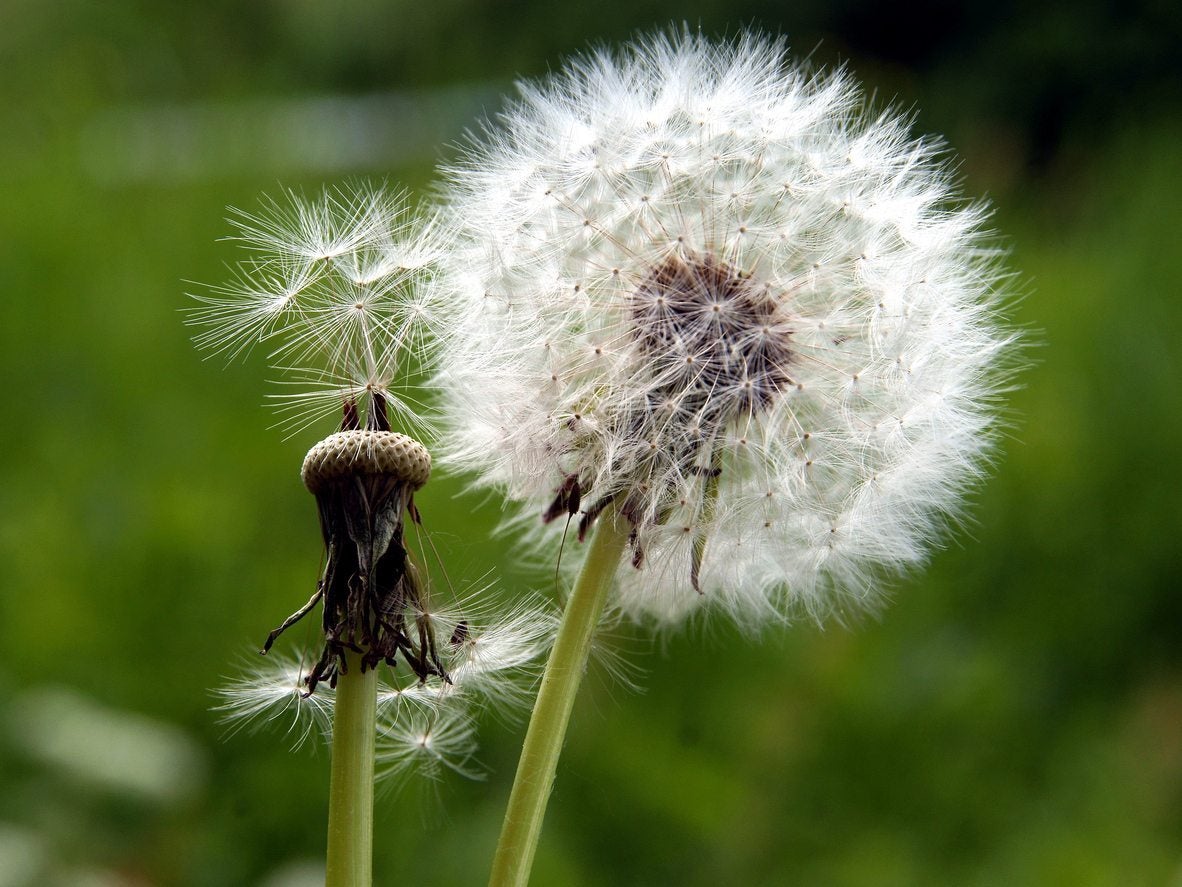Dandelions, those cheerful yellow blooms that dot our lawns, are more than just pesky weeds. They’re nature’s tiny adventurers, embarking on whimsical journeys with their feathery seeds. Let’s delve into the fascinating world of these botanical explorers.
A Golden Symphony
Imagine a sun-kissed meadow, alive with the cheerful melody of dandelions. Their bright yellow petals, like tiny trumpets, beckon bees and butterflies with promises of sweet nectar. Each flower, a masterpiece of nature’s artistry, dances in the breeze, spreading joy wherever it goes.
A Transformation Begins
As the days grow longer, the dandelion’s golden symphony begins to fade. The cheerful blooms give way to a transformation, a metamorphosis that’s as wondrous as a caterpillar turning into a butterfly. The petals retreat, revealing a spherical seed head, a fluffy puffball ready to embark on a grand adventure.
The Seed’s Aerial Ballet

With a gentle gust of wind, the dandelion’s seeds take flight, each one a tiny parachutist, soaring through the air on its feathery parachute. They twirl and dance, carried by the wind’s whims, their destination unknown. Some may land on fertile soil, ready to sprout and grow, while others may drift far and wide, spreading the dandelion’s legacy to distant lands.
A Resilient Survivor
Dandelions are true survivors, capable of thriving in the harshest of conditions. Their deep taproots anchor them firmly to the ground, allowing them to withstand drought and storms. They can even regenerate from root fragments, making them virtually indestructible.
A Culinary Delight
Beyond their beauty and resilience, dandelions are also a culinary treasure. Their young leaves can be enjoyed in salads, while their roots can be roasted and used as a coffee substitute. Dandelion flowers can be used to make wine, jelly, and even fritters.
A Medicinal Marvel
Dandelions have been used in traditional medicine for centuries. They are believed to have diuretic, liver-cleansing, and anti-inflammatory properties. Modern research has also confirmed some of these benefits, highlighting the dandelion’s potential as a natural remedy.
A Symbol of Hope
The dandelion’s ability to thrive in adversity has made it a symbol of hope and resilience. It reminds us that even in the face of challenges, we can find beauty, strength, and the potential for new beginnings.
A Garden’s Secret Ingredient
Dandelions can be a valuable addition to your garden, attracting pollinators and improving soil health. They can also serve as a natural weed suppressant, preventing the growth of less desirable plants.
A Child’s Joy
For children, dandelions are a source of endless fun. They love to blow on the seed heads, watching as the tiny parachutes drift away on the wind. It’s a simple pleasure that can bring joy to any child’s heart.
A Photographer’s Dream
Dandelions are a photographer’s dream, offering a myriad of photo opportunities. From close-up shots of their intricate details to wide-angle landscapes showcasing their beauty in nature, dandelions can inspire creativity and artistic expression.
A Timeless Beauty
Dandelions have captured the hearts of poets, artists, and musicians for centuries. Their timeless beauty and resilience have made them a beloved subject in literature, painting, and music.
A Lesson in Patience
Dandelions teach us the importance of patience. Their seeds may take time to germinate, but when they do, they grow into beautiful, resilient plants. This reminds us that good things come to those who wait.
A Reminder to Embrace Change
The dandelion’s transformation from a cheerful bloom to a fluffy seed head is a reminder that change is a natural part of life. It’s important to embrace change, to let go of the past, and to embrace the future with open arms.
A Source of Wonder
Dandelions are a source of wonder, inspiring us to appreciate the beauty and complexity of the natural world. They remind us that even the smallest creatures can have a big impact on our lives.
A Call to Action
The next time you see a dandelion, take a moment to appreciate its beauty and resilience. Consider planting some dandelions in your garden or simply enjoying their presence in nature. Let’s celebrate these cheerful blooms and all that they represent.
FAQs
While dandelions can be considered a nuisance by some lawn enthusiasts, they are not harmful to lawns. In fact, they can attract pollinators and improve soil health. However, if you prefer a weed-free lawn, there are several methods to control dandelion growth, including hand-pulling, mowing, and herbicide application.
Yes, dandelions are edible and have been used as a food source for centuries. The young leaves can be added to salads, while the roots can be roasted and used as a coffee substitute. Dandelion flowers can also be used to make wine, jelly, and fritters.
Dandelions play an important role in the ecosystem. They provide nectar and pollen for pollinators, such as bees and butterflies. They also help to improve soil health by aerating the soil and adding organic matter.
Dandelions, often dismissed as pesky weeds, are much more than meets the eye. They are nature’s tiny adventurers, spreading joy, beauty, and resilience wherever they go. Let’s celebrate these cheerful blooms and all that they represent.





:max_bytes(150000):strip_icc()/star-of-bethlehem-plant-profile-4774326-hero-943e35e2dc3049b1b2baa110d5fa0e71.jpg?w=200&resize=200,112&ssl=1)
